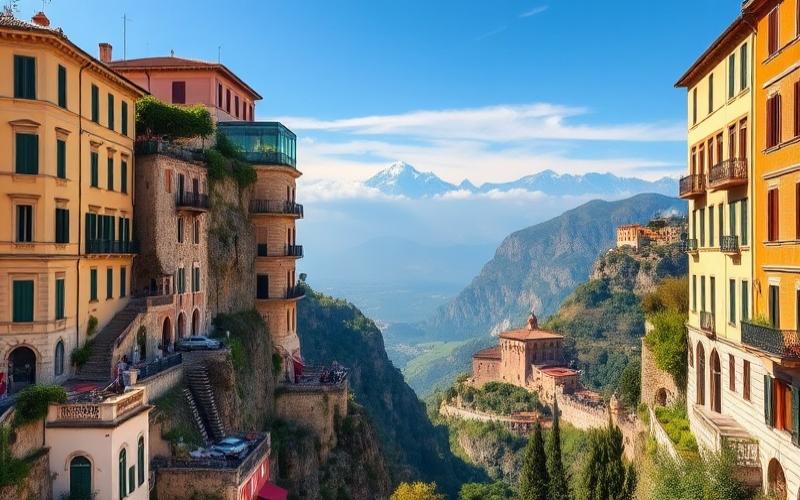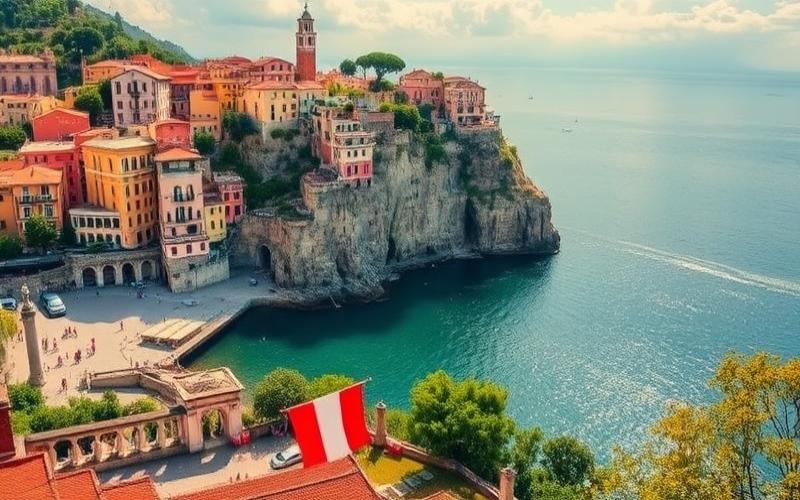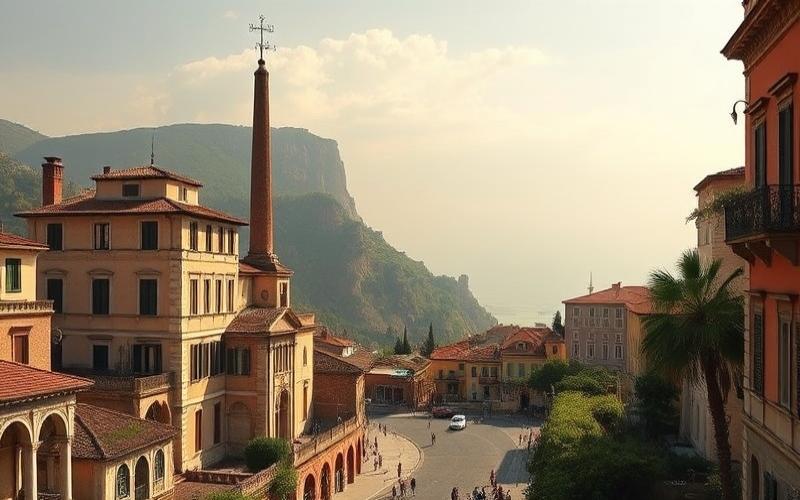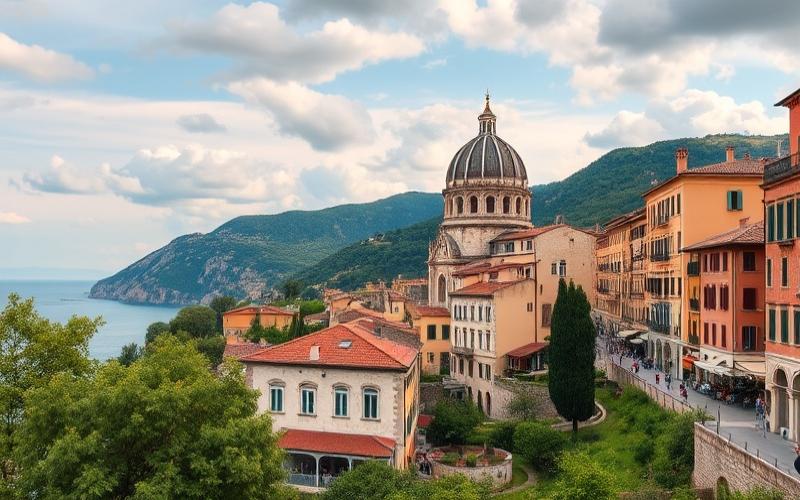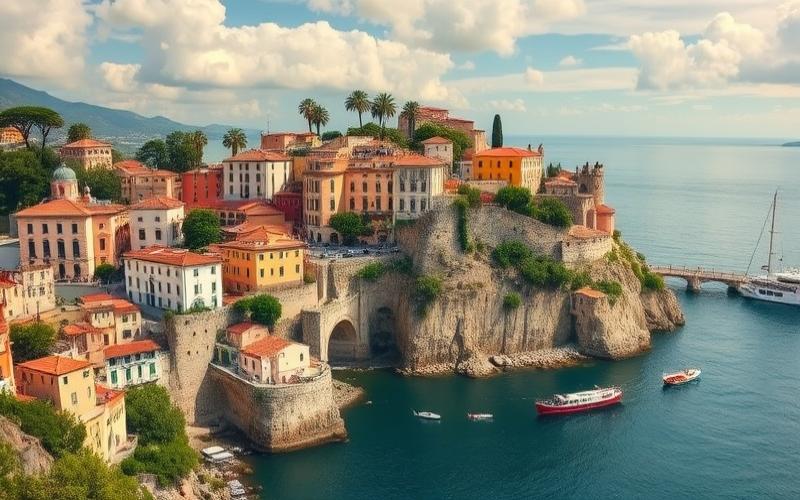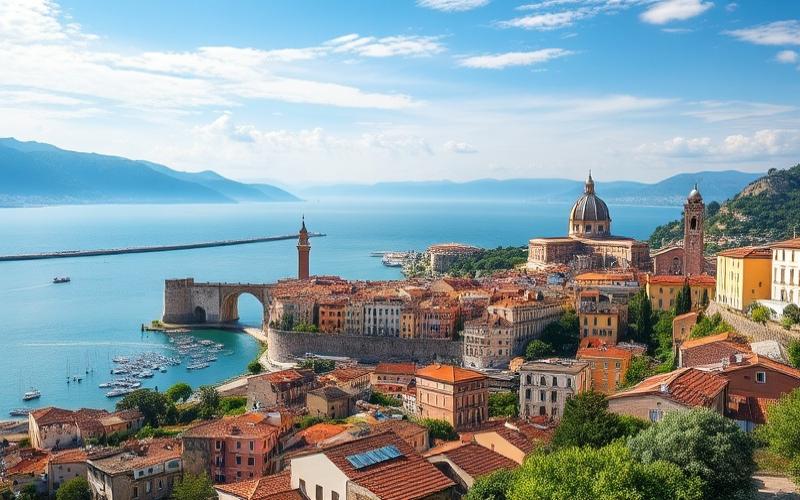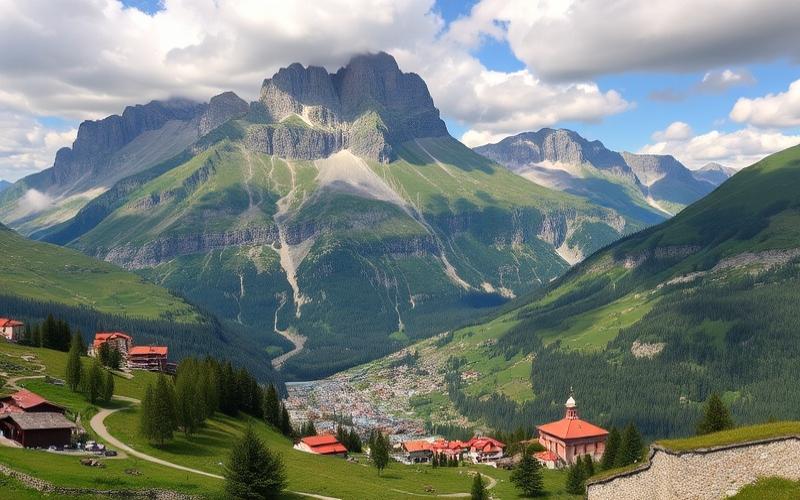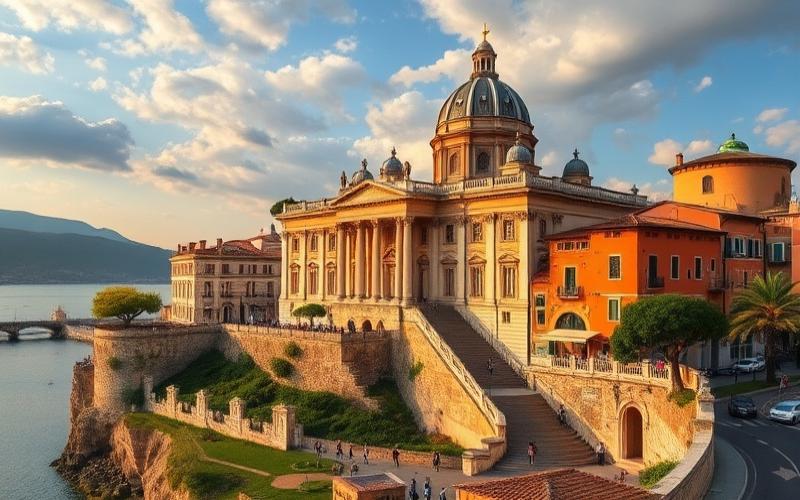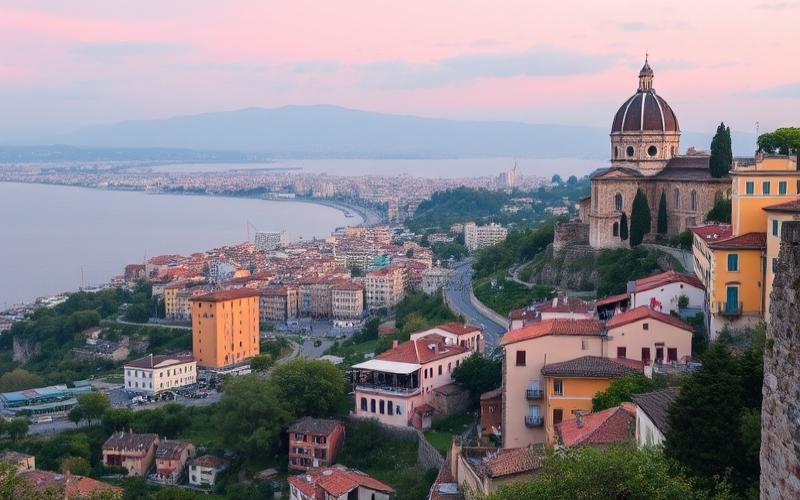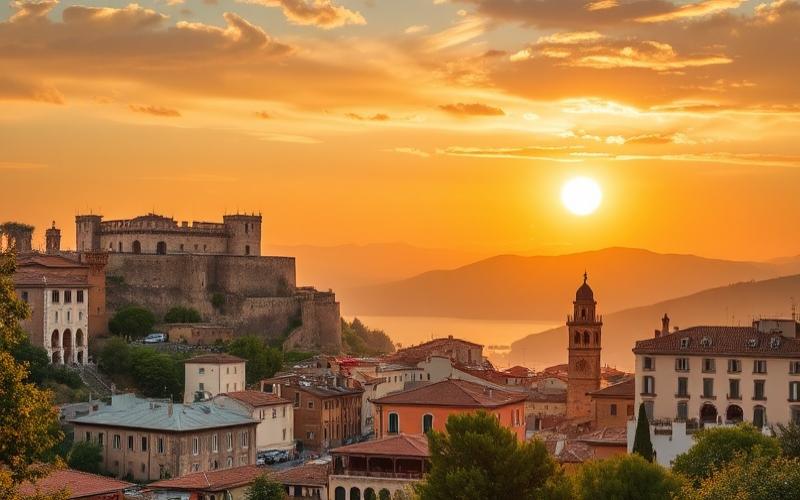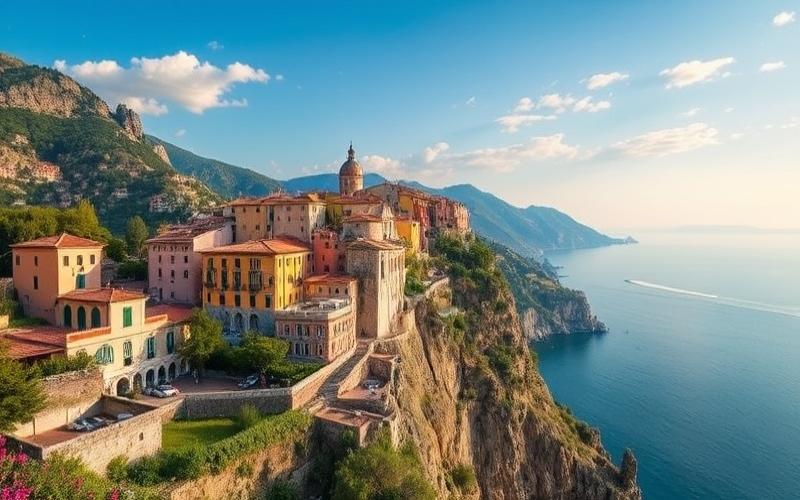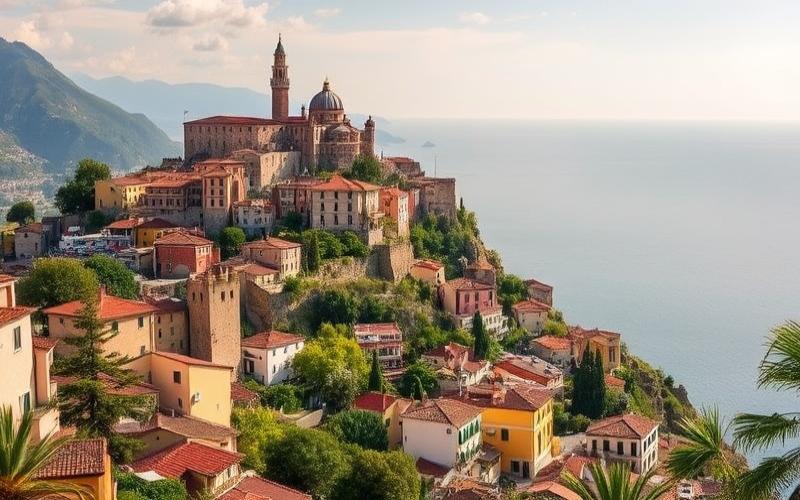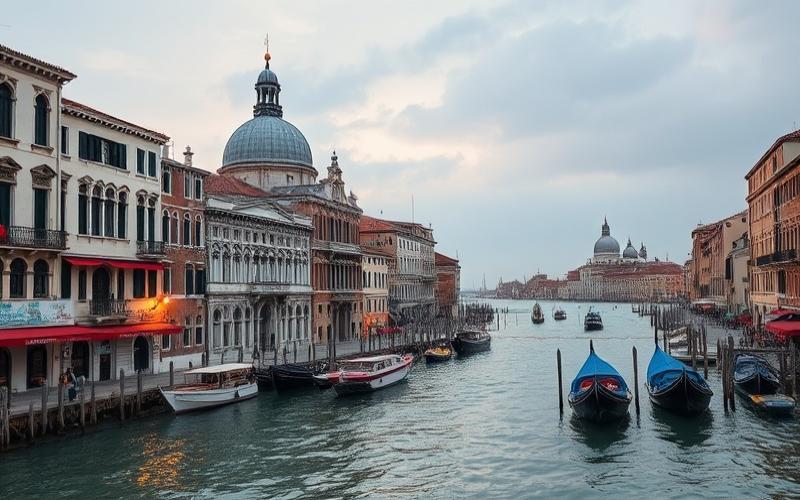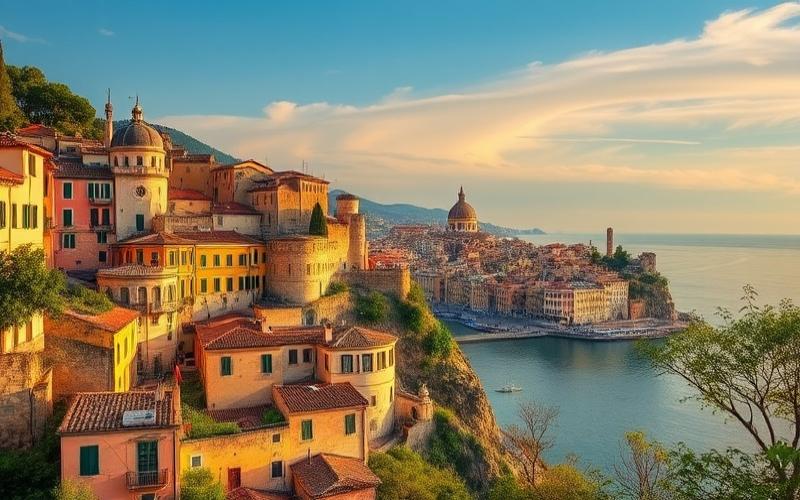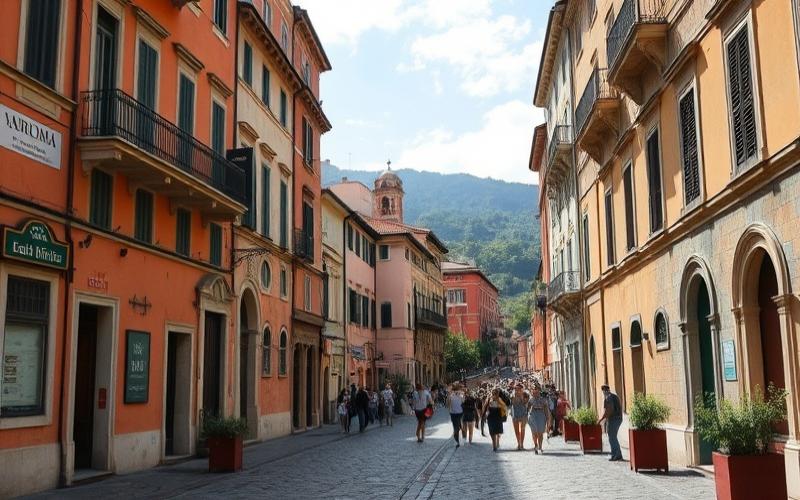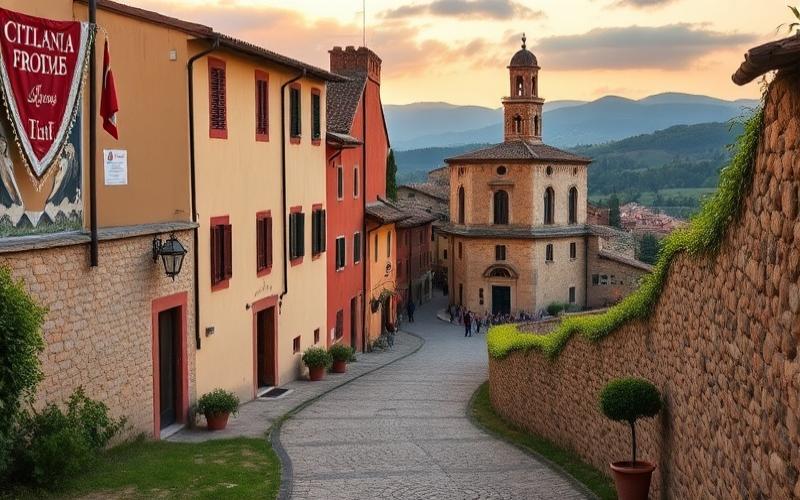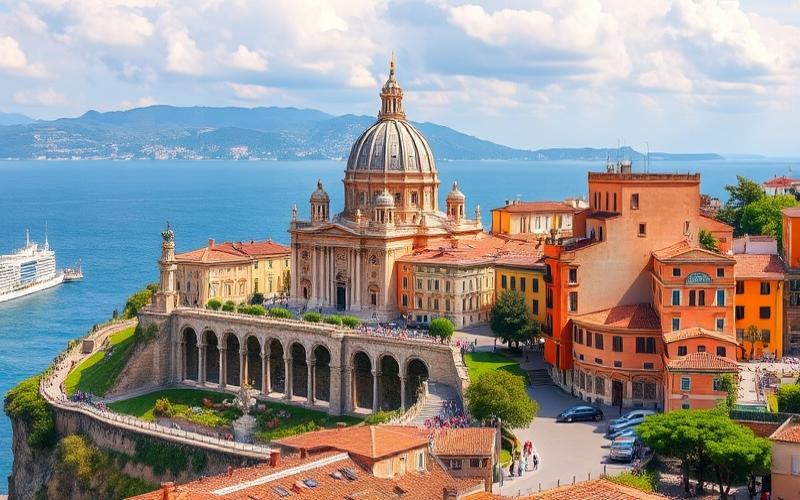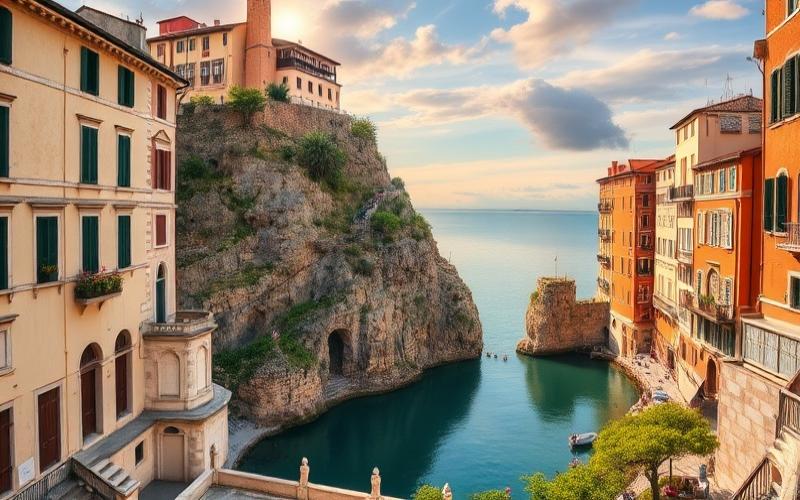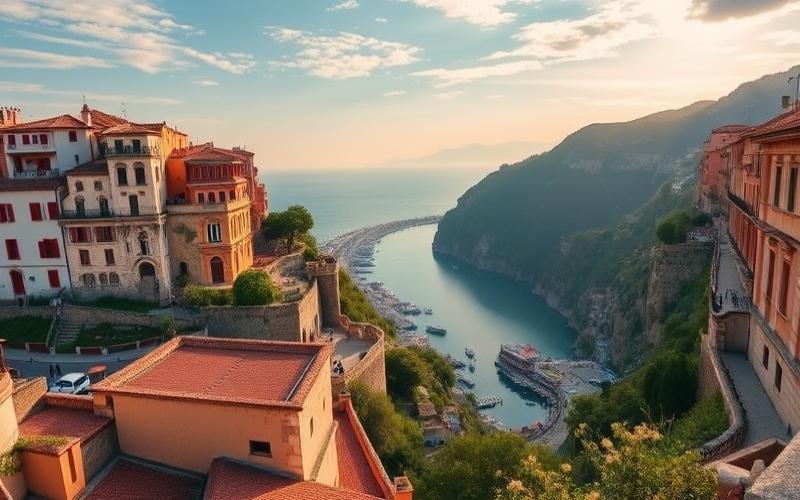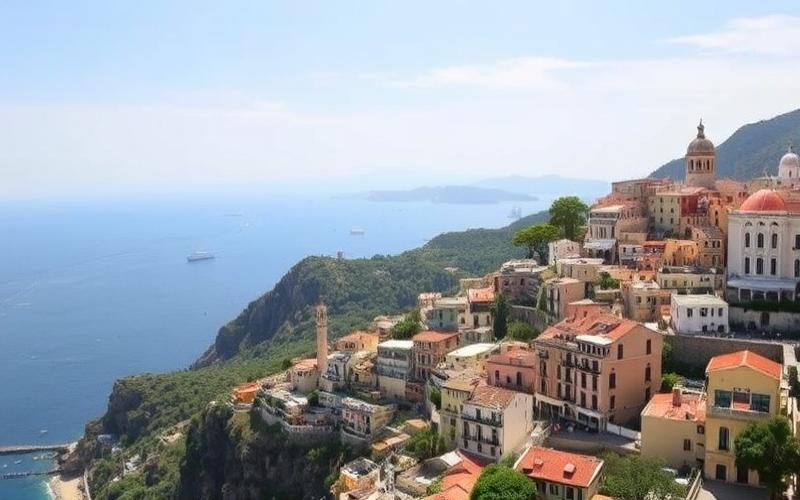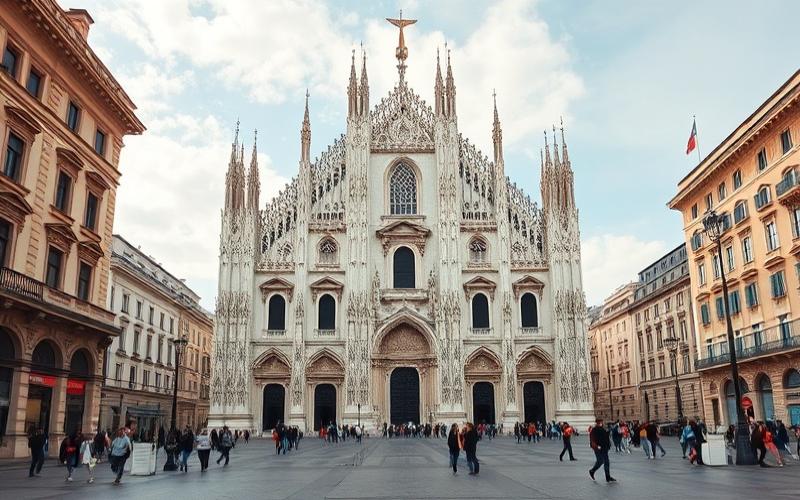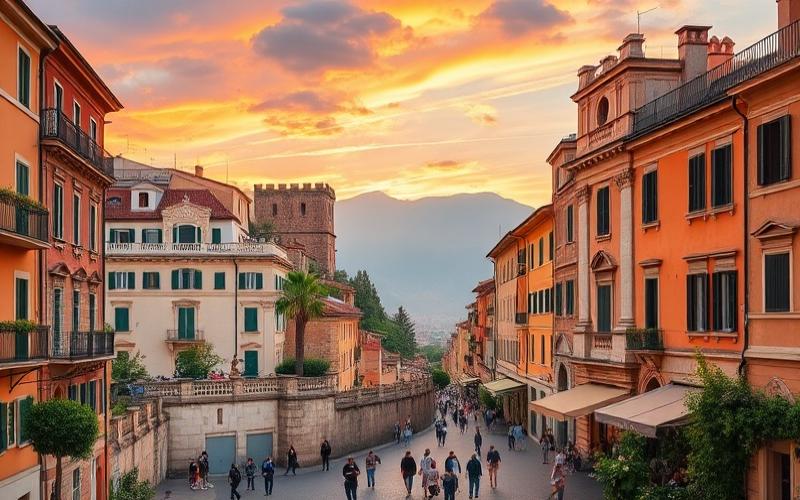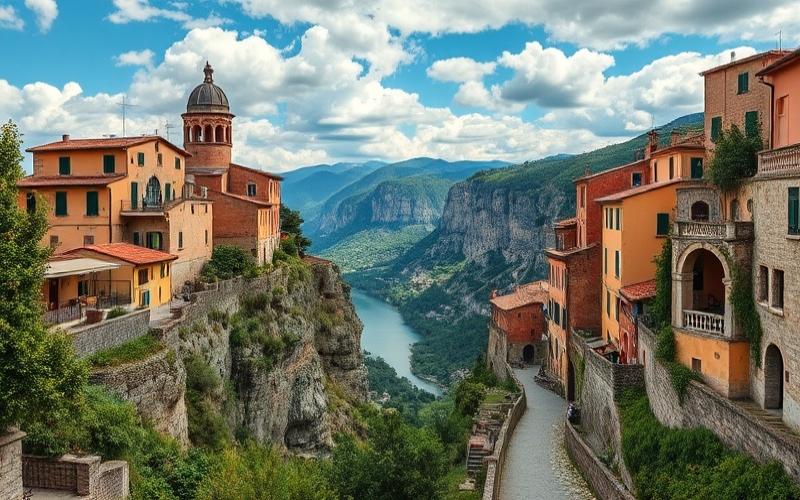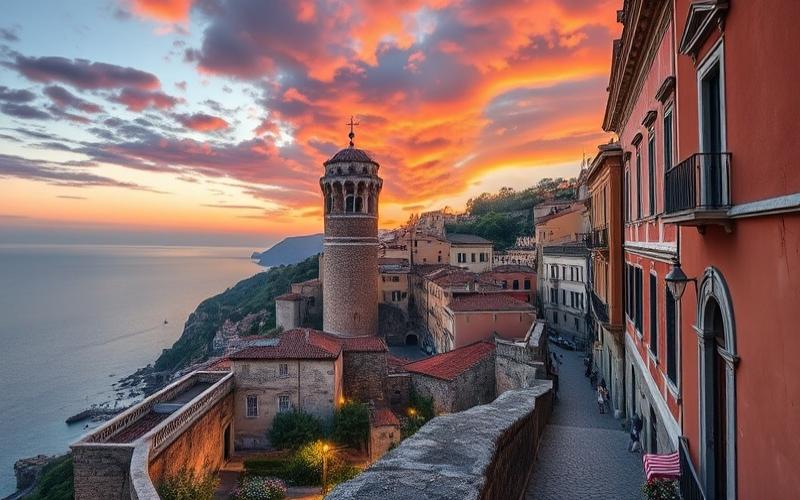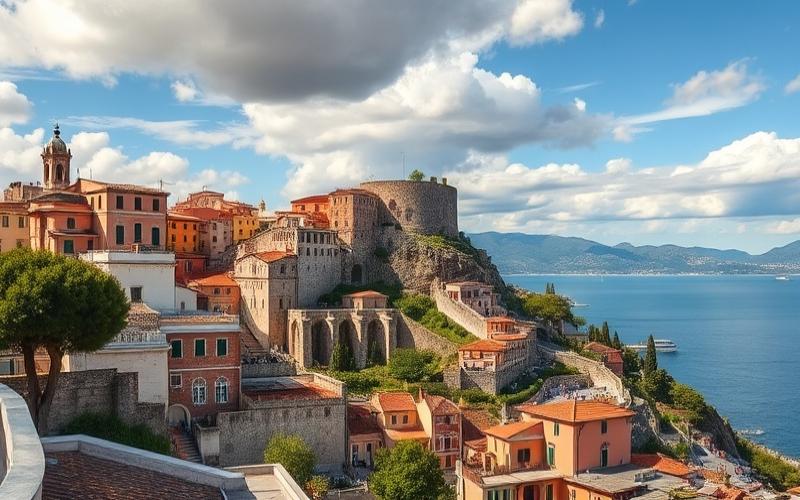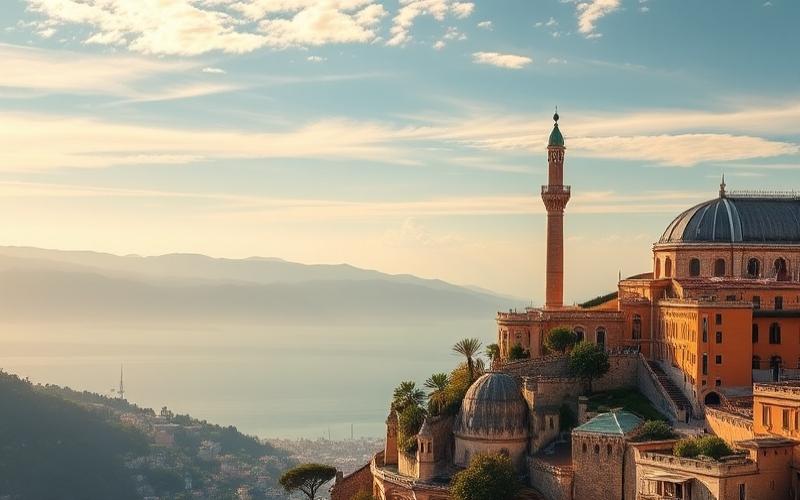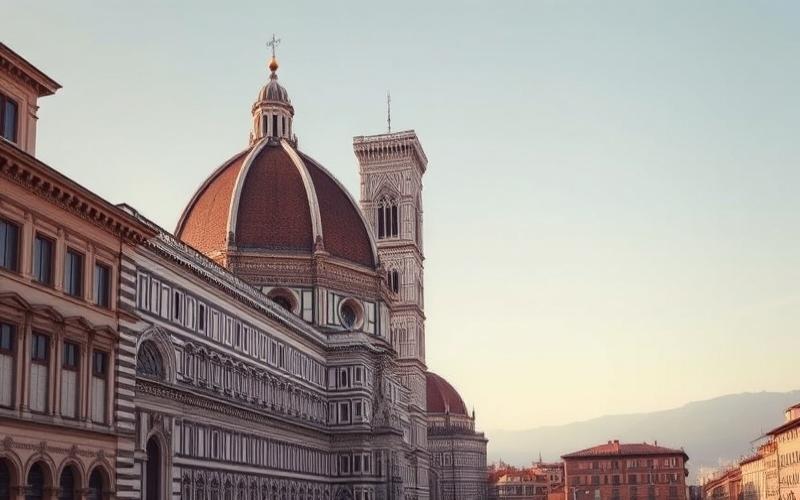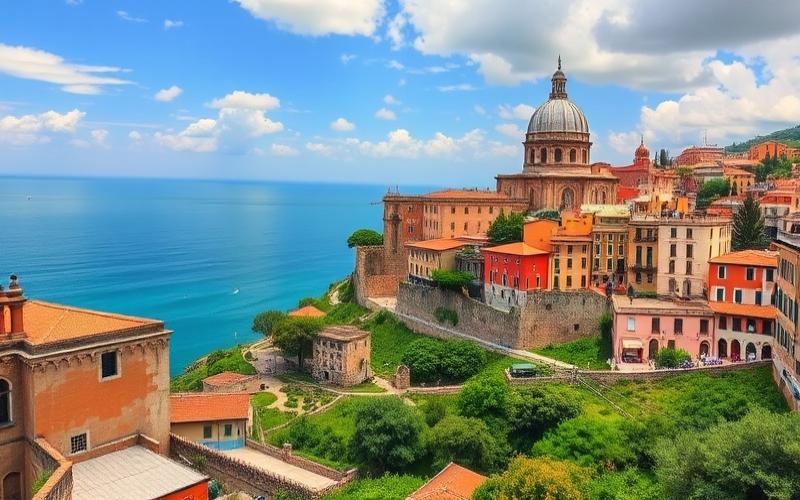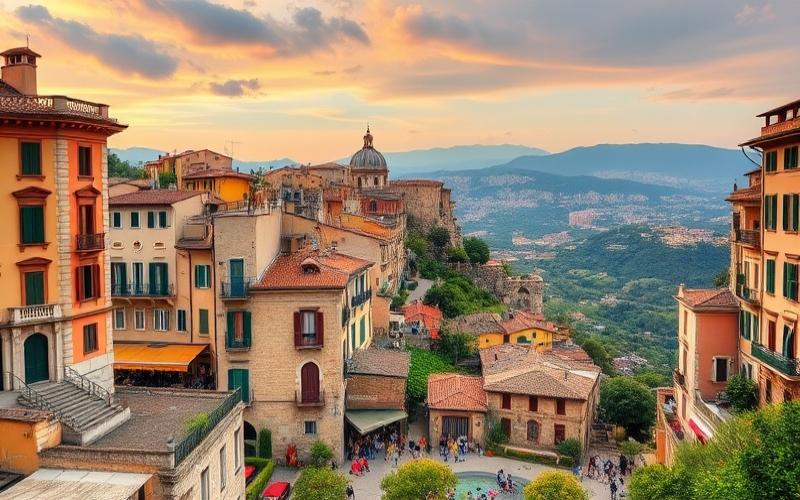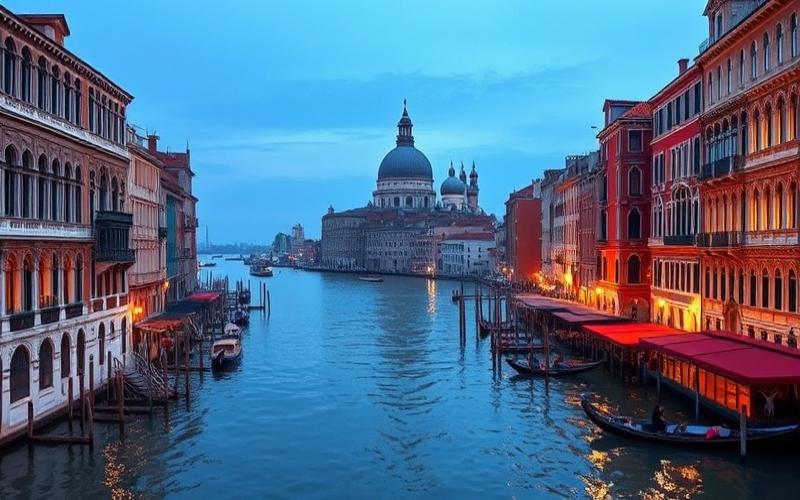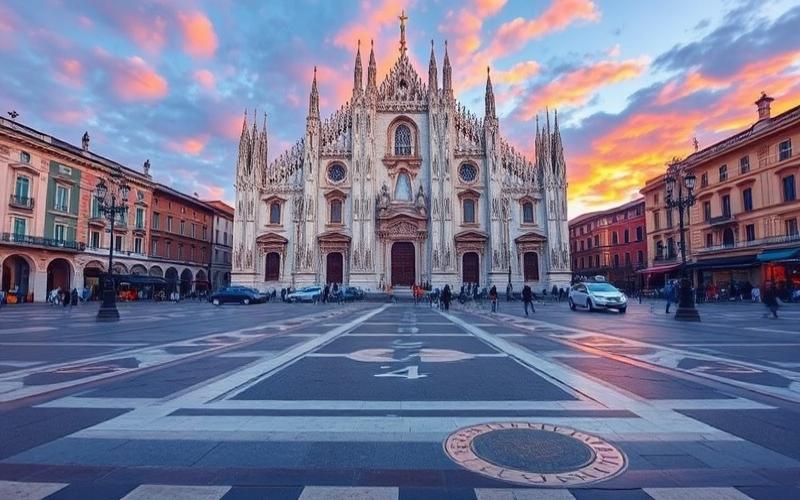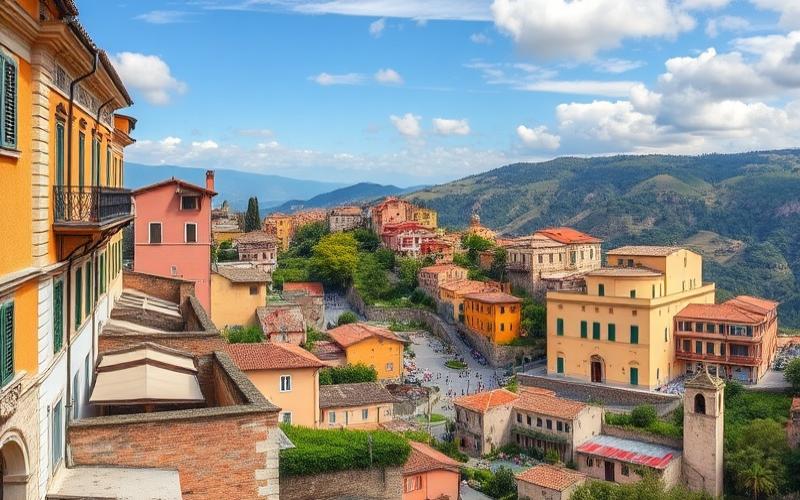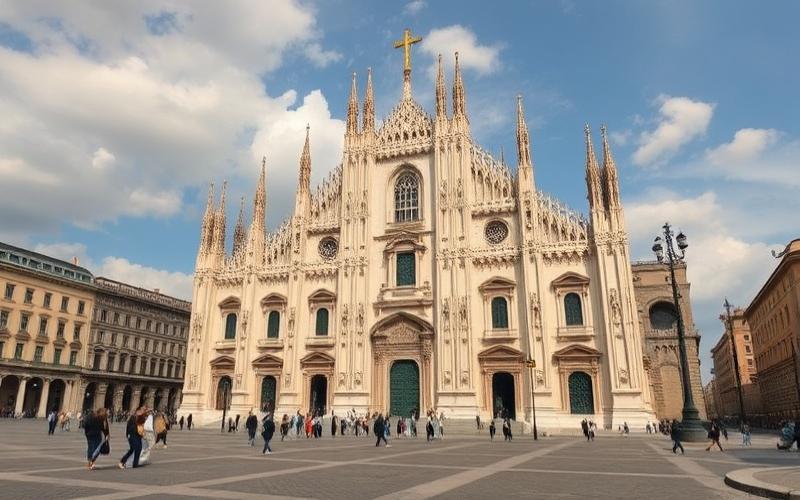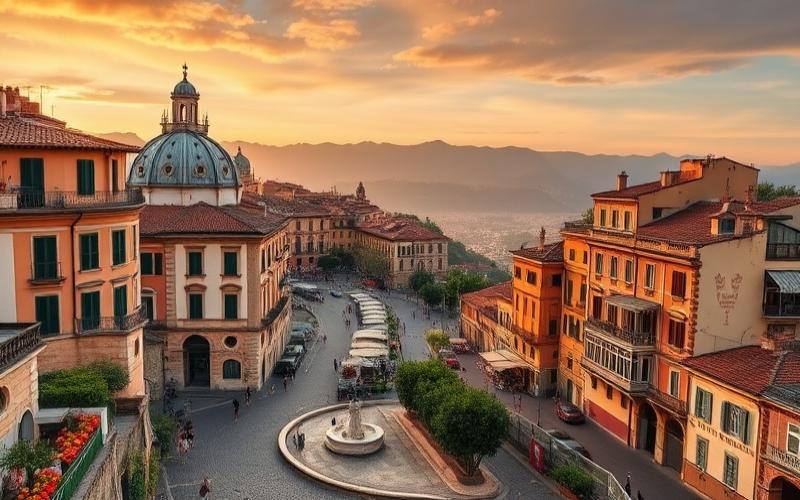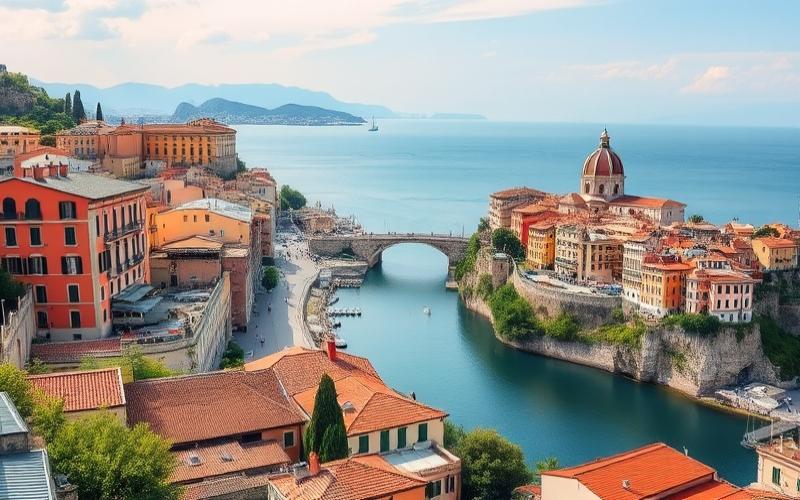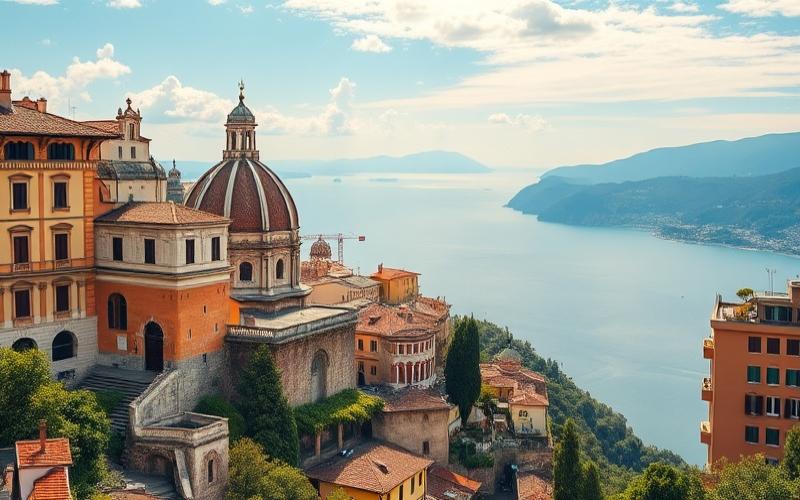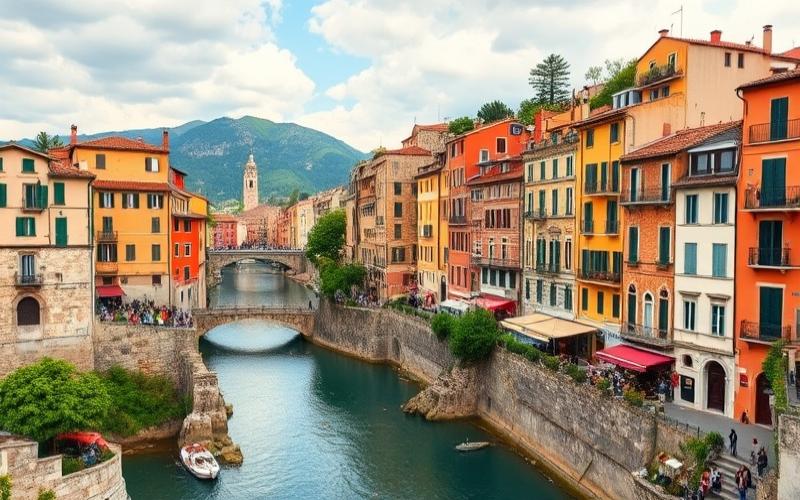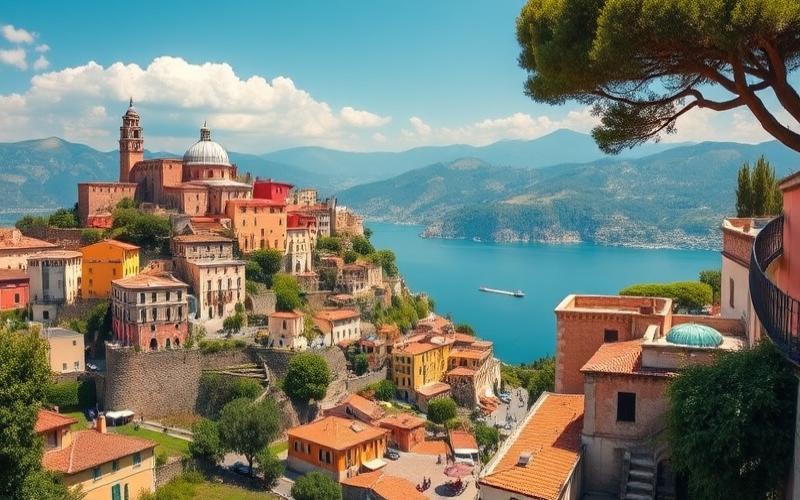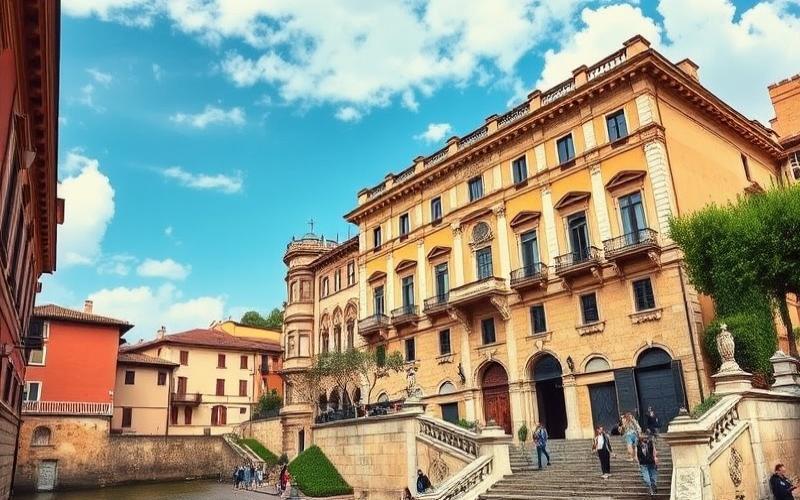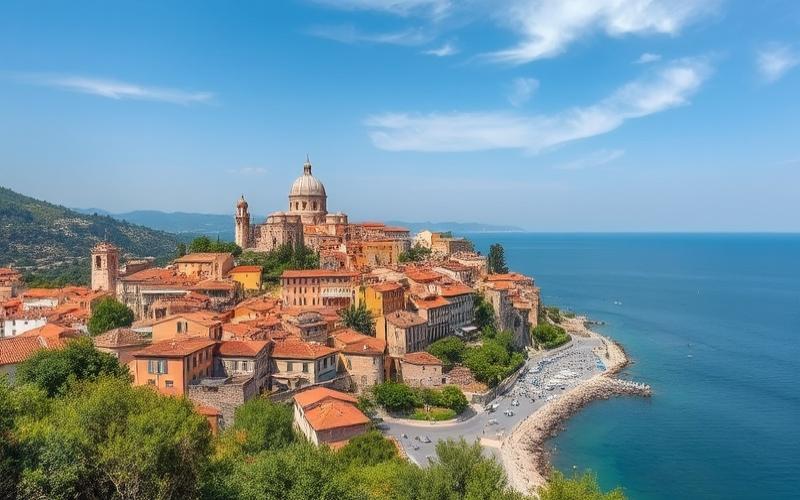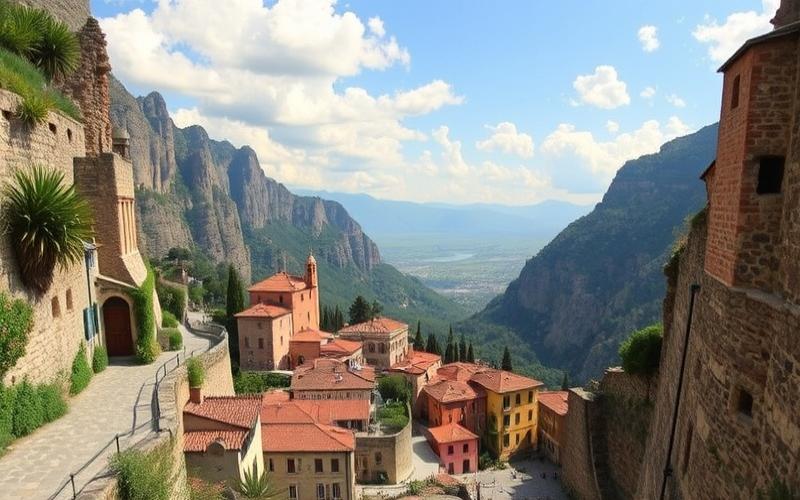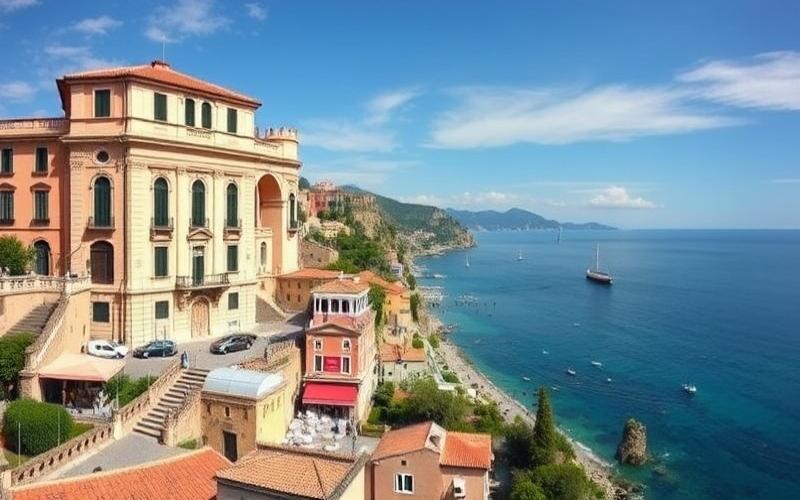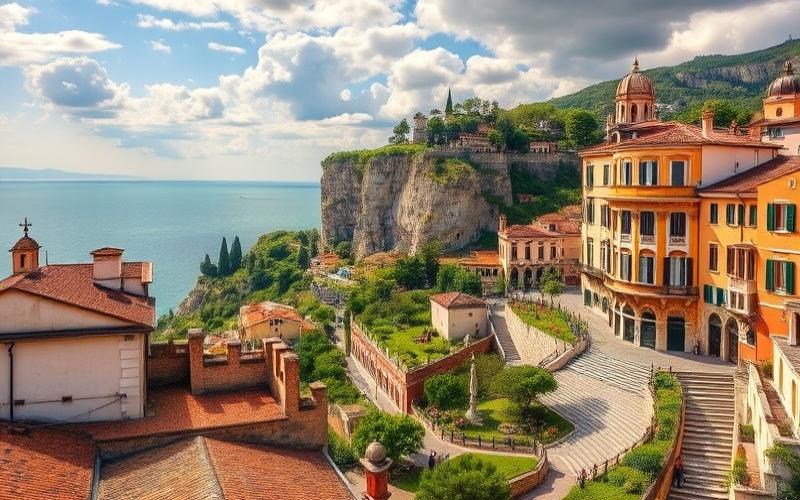
 Published on and written by Cyril Jarnias
Published on and written by Cyril Jarnias
Italy, the cradle of architecture and urban planning, is preparing for a new era of urban development. Ambitious and innovative projects are emerging across the country, promising to redefine the real estate landscape and offer new opportunities for investors. From Milan to Florence, through Rome, Italian cities are reinventing themselves to meet the challenges of the 21st century while preserving their rich historical heritage. Let’s dive into the heart of this urban transformation that is shaping up to be one of the most significant in Italy’s recent history.
Milan, Laboratory of Sustainable Urban Innovation
Milan, Italy’s economic capital, is positioning itself as a true laboratory for sustainable urban innovation. The city faces major challenges such as urban densification, heat islands, air pollution, and lack of green spaces. To address these, Milan is committing to sustainable construction projects that combine architectural boldness with environmental respect.
The Aria Project – Ex Macello is one of the most emblematic of this new approach. As Milan’s first carbon-negative neighborhood, it will span 15 hectares of a former industrial wasteland. This ambitious project plans to build over 1,000 affordable housing units, an international design campus, a scientific hub, and numerous green spaces. The goal is to reduce the carbon footprint by 52% compared to a standard scenario, thanks to innovations such as:
- Reusing over 30,000 m² of existing structures
- Using at least one-third recycled materials
- Constructing one-third of new buildings with wood
- Creating a local energy network (E.ON’s Ectogrid)
- Installing on-site micro-recycling plants
- An innovative ambient air purification system called “Air Factory”
This project, designed by a consortium of renowned architects including Snøhetta Oslo AS and Cino Zucchi Architetti, perfectly illustrates Milan’s determination to become a benchmark for sustainable construction.
L’Innesto – Scalo Greco Breda is another flagship project marking a turning point in Italian urban development. As Italy’s first zero-carbon social housing project, it is part of the plan to transform Milan’s railway wastelands. On a 6-hectare site, the project plans to build 330 housing units, a 445-bed student residence, and 9,000 m² of service spaces. The ambition is to create a true sustainable urban ecosystem, comparable to an urban forest, with the goal of achieving carbon neutrality in 30 years.
Among the notable innovations of this project are:
- Nearly Zero Energy Buildings (NZEB)
- Use of bio-based materials allowing for 100% disassembly and recycling
- Creation of a “Circular Economy District” promoting circular economy and local jobs
- A 4th-generation heating network powered by renewable energy
- An ambitious sustainable mobility strategy
These Milanese projects demonstrate Italy’s ability to deeply rethink its urban development, placing sustainability and innovation at the heart of its concerns.
Good to Know:
Milan is positioning itself as a European leader in sustainable construction with projects like Aria – Ex Macello and L’Innesto, which aim to create carbon-negative or neutral neighborhoods while meeting the needs for affordable housing and green spaces.
Florence: Between Heritage Preservation and Tourism Regulation
Florence, the jewel of the Italian Renaissance, faces unique challenges in urban development. The city must balance the preservation of its exceptional historical heritage with the demands of modern development and the growing pressure of mass tourism.
Regulation of short-term rentals is at the heart of Florence’s urban development strategy. Faced with the explosion of Airbnb listings (over 14,500 units offered in 2025, a 32% increase in two years), the municipality has taken radical measures. The ban on new Airbnb rentals in the historic center, described as an “urban bazooka” by Mayor Dario Nardella, aims to preserve the city’s authenticity and combat tourist gentrification.
This decision has significant repercussions on the local real estate market:
- An expected 20% decrease in tourist numbers in the center
- A projected 10% increase in permanent residents
- A 15% rise in occupancy rates for traditional hotels
- A 40% drop in revenue for agencies specializing in Airbnb management
To support this transition, the municipality has established a €50 million fund to encourage long-term rentals, aiming to rebalance the real estate market.
The sustainable urban renovation project in Florence is not limited to tourism regulation. The city is also committed to environmentally friendly renovation and construction projects. A notable example is the transformation of the former military complex Caserma Lupi di Toscana into a new ecological neighborhood.
This project, spanning 33 hectares, includes:
- Construction of 950 housing units, including 450 social housing units
- Creation of a large 14-hectare urban park
- Installation of public facilities, including a school and a health center
- Use of green technologies for energy and waste management
This project illustrates Florence’s commitment to creating sustainable and inclusive urban spaces while preserving its historical heritage.
Good to Know:
Florence is adopting a radical approach to preserve its historic center by banning new Airbnb rentals, while investing in sustainable urban renovation projects like the transformation of Caserma Lupi di Toscana.
Rome: Between Modernization and Enhancement of Ancient Heritage
Rome, the Eternal City, faces a unique challenge: modernizing its urban infrastructure while preserving and enhancing its immense historical heritage. The Italian capital is undertaking several ambitious projects aimed at improving the quality of life for its residents while strengthening its tourist appeal.
The Colosseum renovation project is emblematic of this approach. This large-scale project, estimated at €18.5 million, aims to restore the Colosseum’s arena while making it more accessible to the public. The project includes:
- Partial reconstruction of the arena floor with sustainable materials
- Installation of a natural ventilation system to preserve ancient structures
- Creation of new visitor routes, including elevated walkways offering panoramic views
- Integration of augmented reality technologies to enhance the visitor experience
This project perfectly illustrates Rome’s commitment to combining heritage preservation with technological innovation.
The sustainable mobility plan for Rome is another major focus of the capital’s urban development. Faced with chronic congestion and pollution problems, the city is undertaking a radical transformation of its transport system. Key elements of this plan include:
- Extension of the metro network with the construction of two new lines
- Creation of a modern tram network, including a circular line around the historic center
- Development of a cycling network over 300 km long
- Implementation of low-emission zones in the city center
- Gradual electrification of the public bus fleet
This ambitious plan aims not only to reduce pollution and congestion but also to improve accessibility to historical sites and create new real estate development opportunities along the new transport lines.
The redevelopment of peripheral neighborhoods is also central to Rome’s urban development strategy. The “Reinventing Cities” project in Rome, particularly concerning the Tuscolano district, plans to transform former industrial areas into new sustainable neighborhoods. This project includes:
- Construction of social housing and coworking spaces
- Creation of urban parks and community gardens
- Installation of renewable energy production systems
- Implementation of innovative waste and water management systems
These initiatives demonstrate Rome’s determination to reinvent itself while respecting its millennial heritage.
Good to Know:
Rome is committed to an ambitious modernization that combines preservation of ancient heritage, as shown by the Colosseum renovation, and sustainable development, with an innovative mobility plan and urban redevelopment projects in peripheral neighborhoods.
Impact on the Italian Real Estate Market: Between Challenges and Opportunities
Ongoing urban development projects in Italy are having a significant impact on the country’s real estate market. This urban transformation creates both challenges and opportunities for investors and real estate sector players.
A redefinition of attractive areas is underway in major Italian cities. Urban renovation projects and public transport development are redrawing the map of real estate attractiveness. In Milan, for example, peripheral neighborhoods hosting innovative projects like Aria – Ex Macello or L’Innesto are seeing their property values increase. In Rome, areas along new metro and tram lines are becoming particularly sought after.
The emergence of new market segments is another notable consequence of these urban projects. We observe in particular:
- Growing demand for eco-friendly housing, especially in new sustainable neighborhoods
- Increased interest in co-living and co-working spaces, reflecting new ways of living and working
- Development of the student and senior residence market, responding to the needs of an aging population and the internationalization of universities
Rental market regulation, particularly in Florence, has significant repercussions on the real estate market. We observe:
- A drop in property prices in some central neighborhoods previously dominated by tourist rentals
- Renewed interest in long-term rental investment
- Increased demand for hotels and hotel residences, benefiting from short-term rental regulation
Growing appeal of sustainable investments is a major trend in the Italian real estate market. LEED or BREEAM certified projects, guaranteeing high environmental performance, are increasingly attracting institutional investors and responsible investment funds.
According to a recent study by the Italian Real Estate Market Observatory, certified sustainable buildings benefit from a value premium of 7 to 11% compared to conventional buildings, and this trend is expected to intensify in the coming years.
Good to Know:
The Italian real estate market is undergoing a profound transformation due to new urban projects, with a redefinition of attractive areas, the emergence of new market segments like eco-friendly housing, and growing appeal for sustainable investments.
Opportunities for Investors: Focus on Innovation and Sustainability
Urban development projects in Italy are opening new perspectives for real estate investors. These opportunities revolve around several strategic axes, reflecting emerging market trends and the priorities of Italian urban policies.
Investment in transforming neighborhoods represents a major opportunity. Areas involved in urban renovation or transport development projects offer significant value-added potential. For example:
- In Milan, peripheral neighborhoods hosting innovative projects like Aria – Ex Macello show strong growth potential
- In Rome, areas along new metro and tram lines are expected to see significant property value appreciation
- In Florence, tourism rental regulation creates investment opportunities in the city center for renovation and long-term rental projects
Development of sustainable real estate projects is emerging as a promising investment axis. The growing demand for ecological and energy-efficient buildings offers interesting prospects:
- Investment in new construction projects meeting NZEB (Nearly Zero Energy Building) standards
- Energy renovation of existing buildings, often benefiting from government tax incentives
- Development of sustainable neighborhoods integrating renewable energy production, smart waste and water management
Investment in new forms of housing represents another significant opportunity. Societal and demographic changes create demand for innovative concepts:
- Next-generation student residences, responding to the increasing internationalization of Italian universities
- Co-living spaces, particularly attractive in large cities for young professionals
- Adapted senior residences, to meet the needs of an aging population
The sustainable hospitality and tourism sector also offers interesting prospects, especially in historical cities like Florence or Rome:
- Development of eco-friendly hotels, responding to growing demand for more sustainable tourism
- Renovation of existing hotels to adapt to new environmental standards and modern traveler expectations
- Creation of innovative accommodation concepts, combining local authenticity and high-end services
Investment in soft mobility infrastructure represents an emerging opportunity. With the development of sustainable mobility plans in major Italian cities, we observe growing interest in:
- Real estate projects integrating bicycle infrastructure (secure parking, repair workshops)
- Commercial and service spaces along new urban cycling paths
- “Mobility hub” concepts combining different sustainable transport modes
These investment opportunities are part of a context of profound transformation of the Italian urban landscape. Investors who can anticipate these trends and align with the sustainability and innovation objectives of Italian cities will be best positioned to benefit from this development dynamic.
Good to Know:
Investment opportunities in Italy are focusing on transforming neighborhoods, sustainable real estate projects, new forms of housing like co-living, the sustainable hospitality sector, and infrastructure related to soft mobility, reflecting emerging market trends and urban policy priorities.
Conclusion: Italy, Land of Urban Innovation and Real Estate Opportunities
Italy is at a turning point in its urban development. The ambitious projects underway in cities like Milan, Florence, and Rome demonstrate a strong will to reinvent urban space to meet the challenges of the 21st century. This profound transformation of the Italian real estate landscape offers numerous opportunities for savvy investors.
Sustainability and innovation are at the heart of this urban revolution. From carbon-negative neighborhoods in Milan to historical heritage renovation projects in Rome, through tourism regulation in Florence, each city is developing unique approaches to create more livable, sustainable, and inclusive urban spaces.
These initiatives have a significant impact on the real estate market. We observe a redefinition of attractive areas, the emergence of new market segments like eco-friendly housing or co-living spaces, and growing interest in sustainable investments. Investors who can anticipate these trends and align with the sustainability objectives of Italian cities will be best positioned to benefit from this development dynamic.
Italy, rich in its historical and cultural heritage, thus demonstrates its capacity to innovate and reinvent itself. The ongoing urban development projects are not just investment opportunities; they represent a vision for the future of Italian cities: urban spaces that harmoniously combine heritage preservation, technological innovation, and environmental sustainability.
In this context of transformation, expertise and in-depth knowledge of the local market will be crucial assets for investors wishing to seize the opportunities offered by the Italian urban renewal. Italy thus asserts itself as a land of urban innovation and real estate opportunities, ready to write a new chapter in its millennial history.
Good to Know:
Italy is positioning itself as a leader in urban innovation in Europe, combining heritage preservation and sustainable development. This transformation offers unique opportunities for investors capable of anticipating new real estate market trends and aligning with the sustainability objectives of Italian cities.
Disclaimer: The information provided on this website is for informational purposes only and does not constitute financial, legal, or professional advice. We encourage you to consult qualified experts before making any investment, real estate, or expatriation decisions. Although we strive to maintain up-to-date and accurate information, we do not guarantee the completeness, accuracy, or timeliness of the proposed content. As investment and expatriation involve risks, we disclaim any liability for potential losses or damages arising from the use of this site. Your use of this site confirms your acceptance of these terms and your understanding of the associated risks.

